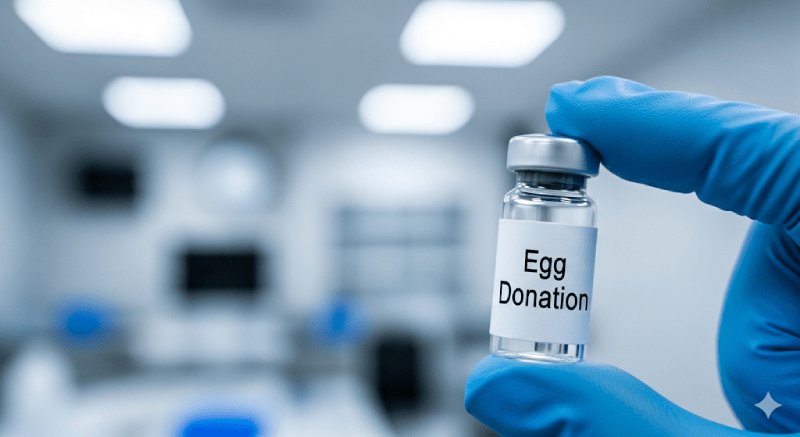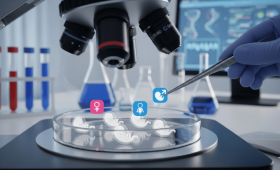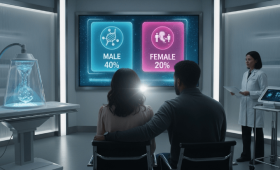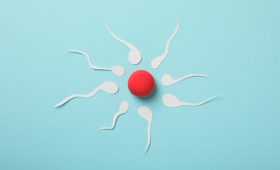Navigating the Complexities of Egg Donation
Egg donation represents a sophisticated medical and personal journey for individuals and couples facing infertility. This process, which involves a female patient (the egg donor) providing eggs to another female (the recipient) to facilitate conception, is a highly effective family-building option with a complex interplay of medical, financial, and legal elements. The success of an egg donation cycle is overwhelmingly tied to the donor’s age and health, rather than the recipient’s, making it a viable solution for a wide range of infertility diagnoses. However, the path is fraught with significant costs and ethical considerations that necessitate a comprehensive understanding for all parties involved. A single, unified cost for egg donation does not exist; instead, the total expense is a wide-ranging figure influenced by a myriad of factors, including the choice between fresh and frozen eggs, the donor’s profile, and the services provided by agencies and clinics. This report will provide a detailed, itemized breakdown of these costs, analyze the procedural complexities and success rates, and explore the critical legal and ethical frameworks that govern this practice.
The Clinical and Procedural Journey: A Step-by-Step Medical Protocol
The medical process of egg donation is a carefully orchestrated sequence of events involving rigorous screening, hormonal synchronization, and minor surgical procedures. For both the donor and the recipient, the journey is distinct yet fundamentally intertwined, designed to maximize the chances of a successful live birth.
A. The “Why”: Medical and Genetic Indications for Donor Eggs
The decision to use donor eggs is typically driven by specific medical or genetic circumstances where a patient is unable to conceive with their own gametes. Medically, this includes individuals who were born without ovaries, are in menopause, or have had a poor response to hormonal stimulation in previous fertility treatments. The use of donor eggs is also a consideration for patients who have experienced persistently poor egg or embryo quality during prior in vitro fertilization (IVF) attempts. A crucial advantage of this approach is that the recipient’s age has a minimal impact on the outcome, as the donor’s egg quality is the primary determinant of success. This makes donor eggs a particularly attractive option for patients in their late 30s or 40s who face declining fertility. Additionally, patients may opt for donor eggs to avoid passing on a known genetic disease to their child.
B. The “How”: The Multi-Phase Medical Process
The process is structured into a series of phases, beginning with donor evaluation and culminating in embryo transfer.
1. Donor Screening and Selection
Before a donor is matched with a recipient, they must undergo a comprehensive evaluation to ensure their physical, genetic, and psychological health. Donors are typically healthy women between the ages of 21 and 34, with some clinics narrowing the age range to 21-31. The screening process includes a physical and gynecological exam, a thorough review of medical and family history, and a series of blood and urine tests. Strict criteria often apply, such as having a body mass index (BMI) between 19 and 29.9, being a non-smoker, and having abstained from recreational drug use and recent tattoos or piercings.
Genetic and psychological screening are also mandatory. Genetic screening aims to minimize the risk of a child having a serious inherited disease and may include testing for conditions like cystic fibrosis and Fragile X syndrome, in addition to a detailed family history review. Psychological evaluation is conducted by a mental health professional to ensure the donor is emotionally prepared, understands the risks and implications of the process, and is making a fully free-willed decision without coercion.
2. Ovarian Stimulation and Retrieval (Donor Protocol)
Once a donor is selected, the medical protocol begins. The donor self-administers hormone injections for a period of 9 to 14 days to stimulate the ovaries to produce multiple eggs in a single cycle. This phase is intensively monitored with frequent sonograms and blood work to ensure optimal egg development. Once the eggs reach maturity, a final trigger injection is given.
The egg retrieval procedure is performed approximately 36 hours later as a minor, outpatient surgical procedure. It typically lasts 20 to 45 minutes and is conducted under intravenous (IV) sedation or anesthesia. Using ultrasound guidance, a fine needle is placed through the vaginal tissues and into the ovary to aspirate the fluid from the follicles, collecting the eggs. Following the procedure, the donor will require a ride home and can anticipate several hours of mild cramping and grogginess.
3. Recipient Synchronization and Transfer Protocol
For the recipient, the process is focused on preparing the uterus to receive and support a pregnancy. In a fresh egg donation cycle, this requires synchronizing the recipient’s cycle with the donor’s stimulation of egg production. This preparatory cycle, which may last around 21 days, involves medications to suppress the recipient’s ovaries, followed by estrogen to develop the uterine lining. As the donor approaches egg retrieval, the recipient begins taking progesterone to ready the uterus for implantation.
The embryo transfer is an outpatient procedure performed three to five days after the eggs are fertilized. A catheter is used to gently place the embryo(s) into the recipient’s uterus. The recipient continues hormonal medications until a pregnancy test is confirmed and, if positive, into the early part of the first trimester. In contrast, a frozen embryo transfer cycle simplifies this process by removing the need for synchronization, as the embryos are available for use at any time.
C. Success Rates and Outcomes: A Data-Driven Analysis
A crucial aspect of egg donation is its high rate of success, a primary reason for its increasing popularity as a fertility treatment. The success of a cycle is overwhelmingly determined by the age and quality of the donor’s eggs, not the age of the recipient.
An important strategic decision for intended parents is choosing between fresh and frozen donor eggs, a choice that directly impacts cost, logistics, and success rates. Data consistently shows that fresh donor eggs have higher live birth rates than frozen ones. The Centers for Disease Control and Prevention (CDC) reported live birth rates of 53.9% for fresh embryos created from fresh eggs, compared to 45.8% for fresh embryos from frozen eggs in 2021. This statistical difference represents a key trade-off for intended parents. The logistical complexity and coordination required for a fresh cycle directly correlate with a higher price point but also a higher probability of success. Conversely, the lower cost and simplified logistics of a frozen egg cycle come with a statistically lower, though still significant, chance of a live birth. This requires a careful weighing of the financial investment against the chances of a successful outcome in a single cycle.
While the live birth rate per single cycle may vary, many clinics report a high cumulative success rate, with some reaching up to 90% after three cycles. This statistic provides a more holistic and encouraging outlook, indicating that a successful pregnancy is highly likely for most patients who commit to the process.
To illustrate the performance difference, the following table presents a comparative analysis of success rates for fresh versus frozen donor eggs.
| USA – Fresh Donor Eggs | USA – Frozen Donor Eggs | |
| Clinical Pregnancy Rate | 65.9% (2015 CDC) | 52.3% (2015 CDC) |
| Live Birth Rate | 55.6% (2015 CDC) | 42.3% (2015 CDC) |
| Live Births | 53.9% (2021 CDC) | 45.8% (2021 CDC) |
A Comprehensive Guide to the Financial Realities: Beyond the Sticker Price
The cost of egg donation is a significant financial commitment and is one of the most common points of inquiry for prospective parents. The total cost is not a fixed number but a cumulative figure that encompasses a wide array of services, fees, and potential expenses.
A. The Total Cost Breakdown: A Holistic View
Total expenses for a complete egg donation cycle can vary dramatically, with general estimates ranging from $25,000 to $65,000 or more. This wide range is attributed to a combination of factors, including the type of cycle chosen (fresh or frozen), the donor’s characteristics, and the services provided by the agency and fertility clinic. For example, frozen donor egg cycles generally have a lower price point, typically ranging from $18,000 to $20,000, while fresh cycles can cost between $25,000 and $35,000 or more due to the added complexity and coordination.
B. An Itemized Analysis of Key Expenditures
Understanding the itemized breakdown of costs is essential for accurate financial planning. The total cost can be categorized into three main areas.
1. Agency & Donor-Related Fees
- Agency Program Fee: This fee, which can range from $8,000 to $17,000, covers the comprehensive services of the agency, including donor recruitment, screening coordination (medical, legal, and psychological), case management, and financial oversight.
- Donor Compensation: This is one of the most variable and significant costs. While a first-time donor may receive compensation between $6,000 and $12,000, highly sought-after donors—such as those with an Ivy League education, specific ethnicity, or a history of successful donations—can command fees of $30,000 or even upwards of $100,000. The compensation for the donor is paid in two parts: a small amount when medications begin and the remainder upon egg retrieval.
2. Medical & Clinic Costs
These fees are typically billed separately and cover the medical procedures performed at the fertility clinic. A single IVF cycle alone can range from $14,000 to $20,000. Medication costs are also a significant expense, with a single cycle requiring an average of $3,000 to $6,000 in medication. Additional, ancillary medical procedures can further increase the total cost. These may include ICSI, which costs $1,000 to $2,500, or Preimplantation Genetic Testing (PGT) which can range from $2,500 for PGT-A to as much as $12,000 for PGT-M.
3. Ancillary Expenses
This category includes the numerous smaller, yet essential, fees required to complete the process. Legal fees, which are necessary for drafting and reviewing the egg donation contract for both the donor and intended parents, average around $1,500. If the donor resides in a different location from the clinic, travel expenses—including flights, hotels, and ground transportation—can add another $3,500 to $7,000 to the total cost. Other fees include legally required donor complication insurance (around $400), escrow account management fees ($400-$500), and separate costs for psychological and genetic counseling.
| Cost Category | Estimated Range |
| Total Fresh Cycle | $25,000 – $65,000+ |
| Total Frozen Cycle | $18,000 – $20,000 |
| Agency Program Fee | $8,000 – $17,000 |
| Donor Compensation | $7,000 – $12,000 (average) to $100,000+ (elite) |
| IVF Cycle & Clinic Costs | $14,000 – $20,000 |
| Medication Costs | $3,000 – $6,000 |
| Ancillary Procedures (e.g., PGT-A) | $2,500 – $4,000 |
| Legal Fees | ~$1,500 |
| Travel Expenses | $3,500 – $7,000 |
| Donor Insurance | ~$400 |
| Escrow Fees | $400 – $500 |
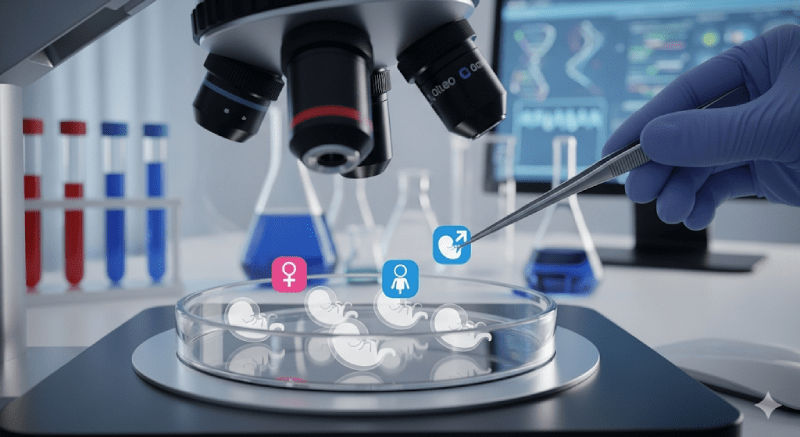
Financial Planning and Funding Options
The substantial cost of egg donation necessitates careful financial planning. Many specialized financing programs have emerged to make the process more accessible. Companies like Future Family, Lending Club, and CapexMD offer fertility-specific loans with flexible payment plans and competitive rates that can cover a wide range of costs.
An important development in recent years is the rise of employer-sponsored fertility benefits. Providers like Progyny and Carrot Fertility offer family-building benefits that can significantly offset the financial burden. These plans often use a proprietary “Smart Cycle” currency that bundles all necessary services—including donor tissue, medications, and testing—into a single benefit unit, streamlining the process for employees.
The increasing prevalence of these benefits highlights a significant trend in the U.S. healthcare landscape. The high, unregulated cost of assisted reproductive technology (ART) has historically created a system of “distributive injustice,” where access to a family is often dictated by socioeconomic status. However, the response to this inequity has led to a fragmented system where access is now increasingly tied to an individual’s employer and their benefits package. While this offers a pathway for some, it also underscores a broader systemic issue: a person’s ability to build a family is not solely a matter of medical need but is contingent on their employment and the specific benefits offered by their company.
The Legal and Ethical Dimensions: Beyond the Medical Procedure
Beyond the clinical and financial considerations, egg donation is governed by a complex framework of legal and ethical principles that are vital for all parties to understand.
A. The Legal Framework: Contracts and Parental Rights
At its core, egg donation is a binding legal agreement. A comprehensive contract must be signed by the donor and the intended parents before any medical procedures commence. This document outlines critical terms, including confidentiality, compensation details, a breakdown of medical procedures and risks, the number of embryos to be created, and the disposition of any unused eggs.
The most fundamental clause in this contract is the relinquishment of parental rights. By signing the agreement, the donor legally waives all rights and responsibilities to any child born from her donated eggs. In the eyes of the law, the intended parents are the sole legal guardians with full parental rights and obligations.
The legal landscape is further complicated by the distinction between an anonymous and a known (directed) donor. While anonymous donation offers a clear separation of identities, a directed donation—often involving a friend or relative—can carry an increased risk of legal disputes and potential conflicts over parenting decisions, even though the donor has no legal claim to the child.
B. The Evolving Landscape of Ethical Considerations
Egg donation is a practice that raises significant ethical questions, particularly concerning informed consent, compensation, and the nature of anonymity.
1. Informed Consent and Financial Coercion
Ethical concerns about the quality of consent are a central debate. Critics argue that the significant financial compensation—which can reach tens of thousands of dollars—may act as a form of coercion, especially for women in financial hardship. The American Society for Reproductive Medicine (ASRM) has suggested that compensation should not exceed $5,000, a guideline that is frequently exceeded in the U.S. market, creating a disconnect between ethical recommendations and commercial practice. This issue is particularly poignant given that the procedure provides no medical benefit to the donor and, in fact, carries documented medical risks.
2. The End of Anonymity
A significant ethical and legal conundrum in the modern age is the erosion of anonymity. While many legal contracts promise anonymity, the proliferation of consumer DNA testing services like 23andMe and AncestryDNA has made true anonymity increasingly rare. Donors should be informed that despite contractual promises, there is a possibility that a donor-conceived child may one day seek to contact them. This evolving reality poses a direct challenge to the legal frameworks and traditional understanding of anonymous donation.
The very nature of egg donation in the U.S. reveals a core paradox: it is simultaneously an altruistic act and a commercialized, transactional service. While some donors are motivated by a selfless desire to help others, the market has commodified the process. This is evident in the existence of agencies that charge more for “premium” donors with specific traits, effectively turning the process into a “made to order” service. This commercial reality, while ethically debated, is a functional component of the system. The high compensation, criticized as coercive, is also what drives the supply of donors, and many donors report a positive experience and willingness to donate again, suggesting that the financial motive, while complex, can be a necessary and functional part of the U.S. egg donation system.
Conclusion: A Guide to Informed Decision-Making
Navigating the landscape of egg donation requires a thorough understanding of its multifaceted nature. The journey is more than a medical procedure; it is a significant financial, legal, and ethical commitment. For prospective parents, an informed decision-making process is paramount.
First, it is crucial to weigh the trade-offs between fresh and frozen donor eggs. While fresh cycles offer a higher statistical chance of success, they are also more complex and costly. Frozen cycles, while less expensive and more logistically straightforward, may require multiple attempts to achieve a live birth.
Second, a careful selection of a reputable agency and clinic is essential. Prospective parents should vet these partners by asking about their screening processes, success rates, and the transparency of their fee structures to avoid unexpected costs.
Finally, it is imperative to secure independent legal counsel and a robust financial plan. Understanding every line item on an estimated budget—including potential hidden costs for medications, genetic testing, and travel—is vital. The evolving nature of anonymity and the potential for a donor-conceived child to seek contact in the future are also important long-term considerations that should be discussed with all parties. By taking these steps, prospective parents can navigate the complexities of egg donation with confidence and focus on their ultimate goal: building a family.
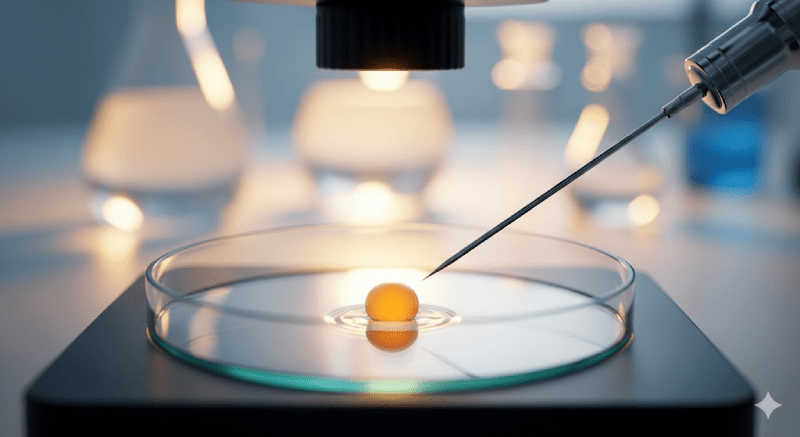
Egg Donation Treatment in Cyprus with Cure Holiday
If you are looking for a promising path to make your dream of parenthood come true, we at Cure Holiday are happy to offer you egg donation treatment in Cyprus. With the most advanced techniques offered by modern medicine and our experienced specialists, we are by your side on this journey.
Why Egg Donation Treatment?
Egg donation is an effective solution for women or couples who are unable to get pregnant with their own eggs. Eggs from a young and healthy donor are fertilized with your partner’s sperm, allowing you to achieve high success rates. Although this process does not allow you to establish a genetic connection, it allows you to personally experience the process of pregnancy and childbirth and have a healthy baby.
Why Cyprus? Why Cure Holiday?
Cyprus is an ideal destination for egg donation treatment. High ethical standards, legal regulations, and state-of-the-art clinics offer a safe and successful treatment process.
As Cure Holiday, we aim to make this process as comfortable and stress-free as possible for you. With our custom-planned services:
- Expert Consultation: Contact our expert consultants who will answer all your questions about the treatment process and determine a special road map for you.
- The Best Clinics: We help you choose the most suitable treatment center by cooperating with the best and most reliable clinics in the field.
- Comfortable Accommodation: The hotel and other needs for your stay during your treatment are organized by Cure Holiday, so you can focus only on your treatment.
- Travel and Transfer: Your transportation to Cyprus and transfers between the clinic and the hotel are planned by us.
- Confidentiality and Support: Your privacy is protected at the highest level throughout the entire process, and special support is provided to you at every step.
You Are One Step Closer to Your Dreams
The decision to undergo egg donation treatment is a big step. We are here to support you both medically and spiritually on this journey. By receiving treatment in Cyprus with Cure Holiday, you can experience this process in a peaceful holiday environment and get one step closer to your dreams of parenthood.
Contact us to get more information and create a special treatment plan for you. Cure Holiday looks forward to guiding you on your journey to start a family.
